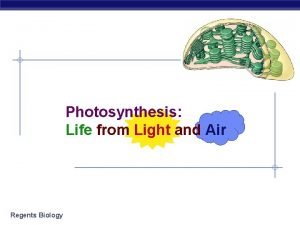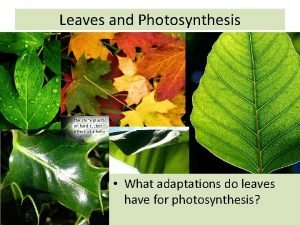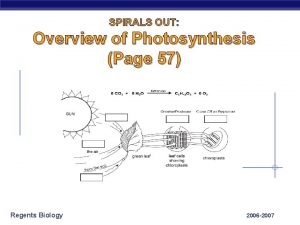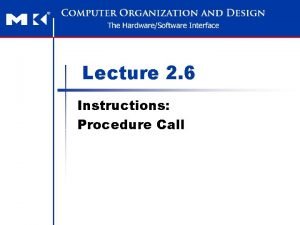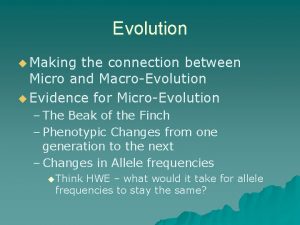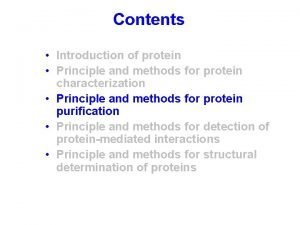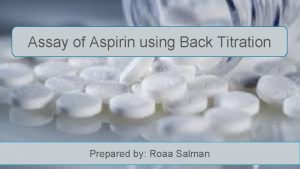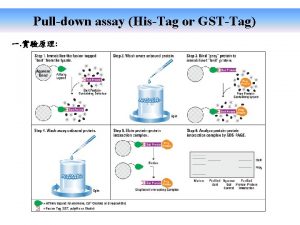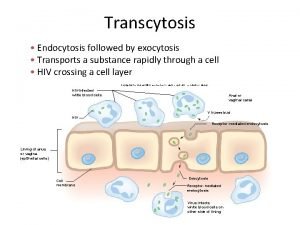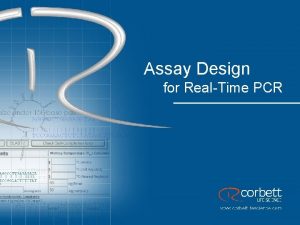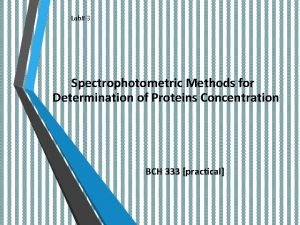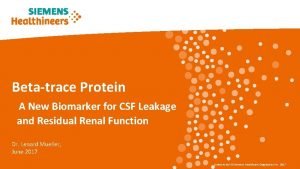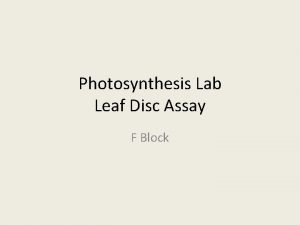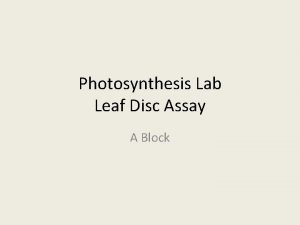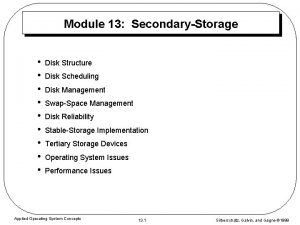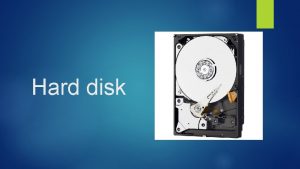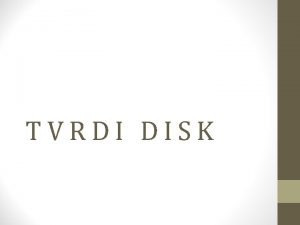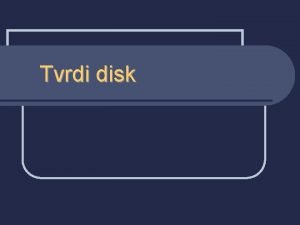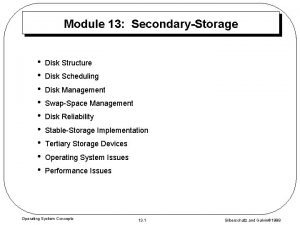Measuring Photosynthesis Floating Leaf Disk Assay Floating Leaf




















- Slides: 20

Measuring Photosynthesis Floating Leaf Disk Assay

Floating Leaf Disk Assay The biology behind the procedure: Leaf disks float, normally. When the air spaces are infiltrated with solution the overall density of the leaf disk increases and the disk sinks.

Floating Leaf Disk Assay The biology behind the procedure: Bicarbonate ion serves as the carbon source for photosynthesis. As photosynthesis proceeds oxygen is released into the interior of the leaf which changes the buoyancy--causing the disks to rise.

Floating Leaf Disk Assay The biology behind the procedure: Since cellular respiration is taking place at the same time, consuming oxygen, the rate that the disks rise is an indirect measurement of the net rate of photosynthesis.

Floating Leaf Disk Assay Objectives This lab is designed to demonstrate the following CO 2 is consumed during photosynthesis O 2 is generated during photosynthesis Under a controlled investigation CO 2 and O 2 can be used to show the rate at which photosynthesis takes place. Appropriate controls allow for comparison in scientific experiments

Floating Leaf Disk Assay Materials Sodium bicarbonate (Baking soda) Liquid Soap Plastic syringe Leaf material Hole punch or straw Plastic cups Timer Light source

Floating Leaf Disk Assay Procedure: The bicarbonate serves as an alternate dissolved source of carbon dioxide for photosynthesis. Prepare a 0. 2% solution. (This is not very much it is only about 1/8 of a teaspoon of baking soda in 300 ml of water. )

Floating Leaf Disk Assay Procedure: Add 1 drop of dilute liquid soap to this solution. The soap wets the hydrophobic surface of the leaf allowing the solution to be drawn into the leaf. It’s difficult to quantify this since liquid soaps vary in concentration. Avoid suds. If your solution generates suds then dilute it with more bicarbonate solution.

Floating Leaf Disk Assay Procedure: Using a punch made from a small diameter soda straw, cut 10 leaf disks from an actively growing leaf by supporting the leaf with your index finger while pressing and using a twisting motion of the straw.

Floating Leaf Disk Assay Procedure: Remove the piston or plunger and place the leaf disks into the syringe barrel. Replace the plunger being careful not to crush the leaf disks. Push on the plunger until only a small volume of air and leaf disk remain in the barrel

Floating Leaf Disk Assay Procedure: Pull a small volume of sodium bicarbonate solution into the syringe. Tap the syringe to suspend the leaf disks in the solution. Holding a finger over the syringeopening, draw back on the plunger to create a vacuum. Hold this vacuum for about 10 seconds. While holding the vacuum, swirl the leaf disks to suspend them in the solution.

Floating Leaf Disk Assay Procedure: Let off the vacuum. The bicarbonate solution will infiltrate the air spaces in the leaf causing the disks to sink. You will probably have to repeat this procedure 2 -3 times in order to get the disks to sink.

Floating Leaf Disk Assay Procedure: Pour the disks and solution into a clear plastic cup. Add bicarbonate solution to a depth of about 3 centimeters. Use the same depth for each trial. For a control infiltrate leaf disks with a solution of only water with a drop of soap--no bicarbonate.

Floating Leaf Disk Assay Procedure: Place under the light source and start the timer. At the end of each minute, record the number of floating disks. Then tap the cup to dislodge any that are stuck against the sides of the cups. Continue until all of the disks are floating.

Floating Leaf Disk Assay Data Collection and Analysis These data are from an investigation using grape ivy leaf disks. Minutes The point at which 50% of the leaf disks are floating (the median) is the point of reference for this procedure. By extrapolating from the graph, the 50% floating point is about 11. 5 minutes. Using the 50% point provides a greater degree of reliability and repeatability for this procedure. Steucek, et. al. (1985) described this term is referred to as the ET 50. Discs 1 0 2 0 3 0 4 0 5 0 6 0 7 1 8 1 9 1 10 1 11 4 12 7 13 8 14 10

Floating Leaf Disk Assay Data Collection and Analysis The point at which 50% of the leaf disks are floating (the median) is the point of reference for this procedure. By extrapolating from the graph, the 50% floating point is about 11. 5 minutes. Using the 50% point provides a greater degree of reliability and repeatability for this procedure. Steucek, et. al. (1985) described this term is referred to as the ET 50.

Floating Leaf Disk Assay Data Collection and Analysis The problem with ET 50 is that it goes down as the rate of photosynthesis goes up It is an inverse relationship and creates the following type of graph data from Steucek, et al. 1985.

Floating Leaf Disk Assay Data Collection and Analysis To correct for this representation of the data and present a graph that shows increasing rates of photosynthesis with a positive slope the ET 50 term can be modified by taking the inverse or 1/ET 50. This creates a graph like this(data from Steucek, et al. 1985. ) data from Steucek, et al. 1985.

Floating Leaf Disk Assay Extension In this graph, the light was turned off at 14 minutes and the cups with their floating disks (grape ivy) were placed in the dark

 Types of storage management
Types of storage management Leaf diagram photosynthesis
Leaf diagram photosynthesis Leaf diagram photosynthesis
Leaf diagram photosynthesis What are the adaptations of leaf for photosynthesis
What are the adaptations of leaf for photosynthesis Leaf diagram photosynthesis
Leaf diagram photosynthesis Leaf and non leaf procedure
Leaf and non leaf procedure Maple leaf and oak leaf homologous
Maple leaf and oak leaf homologous Salting out proteins
Salting out proteins Enzyme-linked immunosorbent assay (elisa)
Enzyme-linked immunosorbent assay (elisa) Principle of assay of sodium benzoate
Principle of assay of sodium benzoate Back titration of aspirin
Back titration of aspirin Gst pulldown assay
Gst pulldown assay Apoptosis assay
Apoptosis assay Virochip
Virochip Sucrose hemolysis test
Sucrose hemolysis test Rt pcr primer design
Rt pcr primer design Plaque assay
Plaque assay Principle of bradford assay
Principle of bradford assay Betatrace
Betatrace Assay technology inc
Assay technology inc Hai assay
Hai assay

